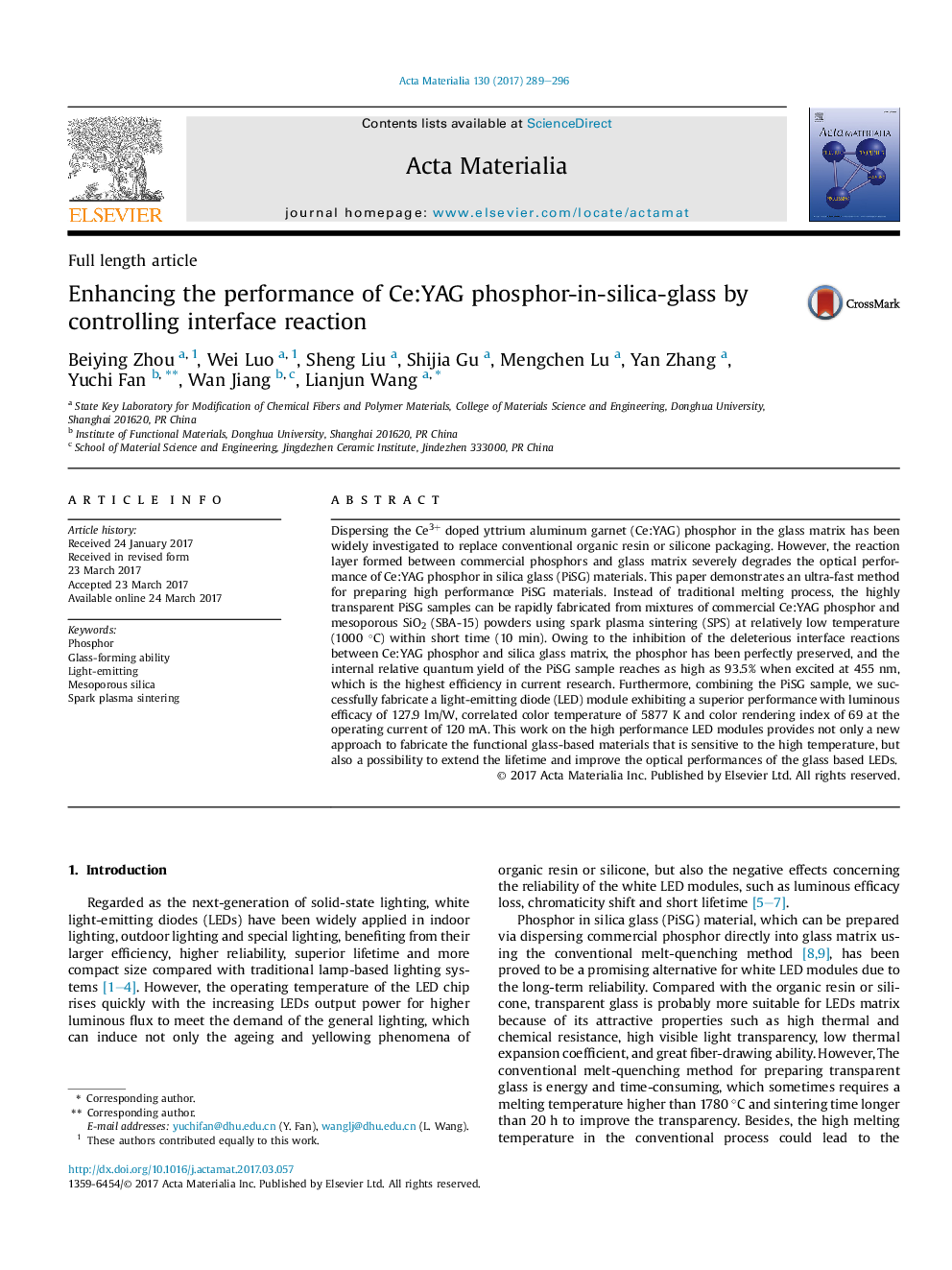| Article ID | Journal | Published Year | Pages | File Type |
|---|---|---|---|---|
| 5436039 | Acta Materialia | 2017 | 8 Pages |
Dispersing the Ce3+ doped yttrium aluminum garnet (Ce:YAG) phosphor in the glass matrix has been widely investigated to replace conventional organic resin or silicone packaging. However, the reaction layer formed between commercial phosphors and glass matrix severely degrades the optical performance of Ce:YAG phosphor in silica glass (PiSG) materials. This paper demonstrates an ultra-fast method for preparing high performance PiSG materials. Instead of traditional melting process, the highly transparent PiSG samples can be rapidly fabricated from mixtures of commercial Ce:YAG phosphor and mesoporous SiO2 (SBA-15) powders using spark plasma sintering (SPS) at relatively low temperature (1000 °C) within short time (10 min). Owing to the inhibition of the deleterious interface reactions between Ce:YAG phosphor and silica glass matrix, the phosphor has been perfectly preserved, and the internal relative quantum yield of the PiSG sample reaches as high as 93.5% when excited at 455 nm, which is the highest efficiency in current research. Furthermore, combining the PiSG sample, we successfully fabricate a light-emitting diode (LED) module exhibiting a superior performance with luminous efficacy of 127.9 lm/W, correlated color temperature of 5877 K and color rendering index of 69 at the operating current of 120 mA. This work on the high performance LED modules provides not only a new approach to fabricate the functional glass-based materials that is sensitive to the high temperature, but also a possibility to extend the lifetime and improve the optical performances of the glass based LEDs.
Graphical abstractDownload high-res image (189KB)Download full-size image
